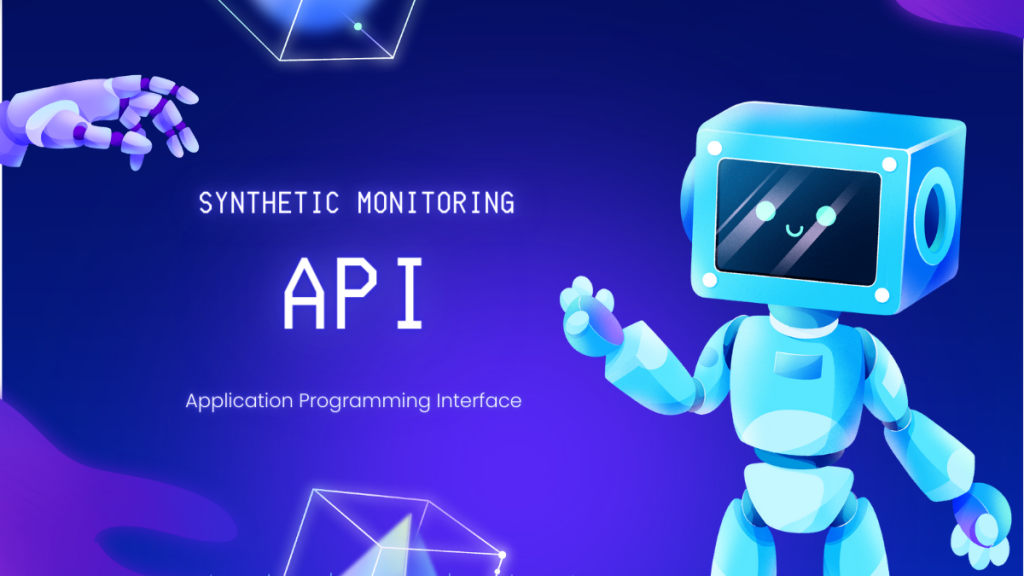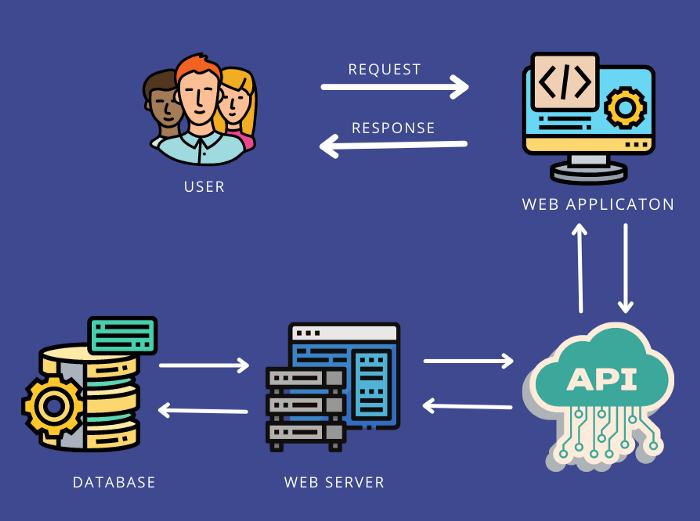
What is API Monitoring?
An API, or Application Programming Interface, is a set of rules, protocols, and tools for building software and applications. It specifies how software components should interact. APIs are used to enable the integration between different software applications, allowing them to communicate with each other without knowing the internal workings of each other’s software.
There are several types of APIs, including:
- Web APIs: These are designed for the web and usually provide access to services over the HTTP protocol. Examples include REST (Representational State Transfer), SOAP (Simple Object Access Protocol), and GraphQL APIs.
- Library/Framework APIs: These APIs are part of libraries or frameworks and allow developers to use their functionalities within their own code. For example, the jQuery library provides an API for simplifying HTML document traversing, event handling, and Ajax interactions.
- Operating System APIs: These provide functions for interacting with the operating system, such as file handling, creating and managing processes, and networking. An example is the Windows API (WinAPI) for Microsoft Windows operating systems.
- Database APIs: These enable communication with database management systems. They allow for creating, reading, updating, and deleting data in a database. SQL (Structured Query Language) is an example of a database API.
APIs play an important role in software development by encouraging code reuse and modular programming. They let developers to use certain features without having to create them from start, saving time and effort.
How APIs working

APIs operate by establishing a set of rules and protocols for how software programs interact with one another.
- Request for Service – An application (known as the client) makes a request to an API (hosted on a server) to access a specific service or data. This request is made via a defined interface, which includes the use of defined URLs (endpoints) and methods (GET, POST, PUT, DELETE, etc.) in the case of web APIs.
- Processing the Request – The server that hosts the API receives the request. The API then interprets the request, performs the necessary actions required by the request (such as accessing a database, performing calculations, etc.), and prepares an appropriate response. This process might involve authentication and authorization steps to ensure that the requester has the right to access the data or functionality.
- Sending the Response – The API sends a response back to the requesting application. This response can include the data requested, a confirmation of a successful operation, or error messages if the request could not be fulfilled for some reason. The data returned by APIs, especially web APIs, is often in a format that’s easy to parse programmatically, such as JSON (JavaScript Object Notation) or XML (eXtensible Markup Language).
Example Scenario:
Let’s consider a simple example of a weather application on your smartphone that retrieves weather data from a remote server via a web API.
- Request: When you want to see the weather forecast, the app sends a request to the weather service’s API. The request includes your location and possibly your authentication token.
- Processing: The server processes the request, fetches the relevant weather data (potentially from a database or another service), and formats it as a response.
- Response: The API then sends this weather data back to your application in a structured format, such as JSON, which your app then interprets and displays on your screen in a user-friendly way.
This process allows different software systems to communicate and share data and functionality in a standardized way, enabling the rich and dynamic experiences users expect from modern software applications.
REST, SOAP, GraphQL. What are the differences?
What is an API Monitoring?
API monitoring is the process of watching and checking the performance and availability of application programming interfaces (APIs) to verify that they work properly and fulfill performance benchmarks and service level agreements (SLAs). It is an important aspect of API management since it ensures the quality of service for apps that rely on internal and external APIs.
- Availability Monitoring – This checks whether the API is up and accessible at all times. It involves sending regular requests to the API and verifying that it responds appropriately, helping identify downtime or accessibility issues.
- For this step, one can use simple HTTP Monitoring as well.
- Performance Monitoring – This evaluates how well the API responds to requests under various conditions. It measures metrics such as response time, latency, and throughput, ensuring that the API meets its performance benchmarks.
- Functional Monitoring – This involves testing the API to ensure it behaves as expected, returning the correct data or output in response to specific requests. This type of monitoring is crucial for verifying that the API continues to function correctly after updates or changes.
- Security Monitoring – Security monitoring focuses on detecting unauthorized access and potential security vulnerabilities within the API. It includes monitoring for unusual activity that could indicate a security breach or attempted attack.
- Error Tracking –This part includes identifying and documenting issues that occur when the API is called. Monitoring error rates helps to understand the API’s stability and may identify root causes that must be addressed.
- Data Quality and Validation –This guarantees that the data given by the API is accurate, full, and properly structured. It is critical for applications that require accurate and trustworthy data from external sources.
Did you know API monitoring powered by Xitoring provides real-time alerts and detailed reports, enabling you and operations teams to quickly identify and resolve issues before they impact end-users. Effective API monitoring can lead to improved performance, reliability, and user satisfaction, making it an indispensable part of modern software development and operations.
Monitoring an API endpoint is critical for plenty of reasons, all of which help to the overall health, security, and user experience of the apps that rely on it.
- Ensuring AvailabilityAPI endpoints must be available when users or dependent services require them. Monitoring ensures that the API is available and operational, reducing downtime and the possibility of service disruptions.
- Maintaining Performance StandardsPerformance is crucial to the user experience. Slow or delayed API replies can cause annoyance, lower user satisfaction, and, eventually, the loss of users or clients. Monitoring enables teams to measure performance parameters like as response time, throughput, and latency, ensuring that the API fulfills the desired performance standards.
- Detecting and Diagnosing Issues EarlyBy continuously checking API endpoints, issues can be detected and diagnosed early before they escalate into serious problems. This proactive approach helps in maintaining smooth operations and reducing the time and resources needed for troubleshooting and fixing issues.
- SecurityAPIs are common targets for cyber attacks. Monitoring an API endpoint can help in identifying suspicious activities, potential security breaches, and vulnerabilities early, allowing for swift action to protect sensitive data and prevent unauthorized access.
- Optimizing User ExperienceThe performance and reliability of API endpoints directly affect the user experience of applications that rely on them. By ensuring that APIs are responsive and available, organizations can provide a seamless experience to their users, which is crucial for maintaining user engagement and satisfaction.
- Compliance with SLAsMany APIs have service level agreements (SLAs) that specify the expected performance and availability levels. Monitoring helps in ensuring compliance with these SLAs, which is important for maintaining trust and contractual obligations with clients and partners.
- Cost ManagementInefficient or faulty APIs can lead to increased bandwidth usage, unnecessary processing, and other resource wastages. Monitoring helps in identifying inefficiencies, enabling optimizations that can lead to cost savings.
- Data Accuracy and IntegrityFor APIs that deliver or receive data, it’s crucial to ensure that the data is accurate, consistent, and complete. Monitoring can help verify data integrity and quality, which is especially important for applications that rely on up-to-date and precise information.
To summarize, monitoring API endpoints is critical for operational excellence, security, cost effectiveness, and delivering a high-value user experience. It helps businesses to proactively manage and handle issues, ensuring that their digital offerings stay competitive and reliable.
Let’s start Monitoring API Endpoints now